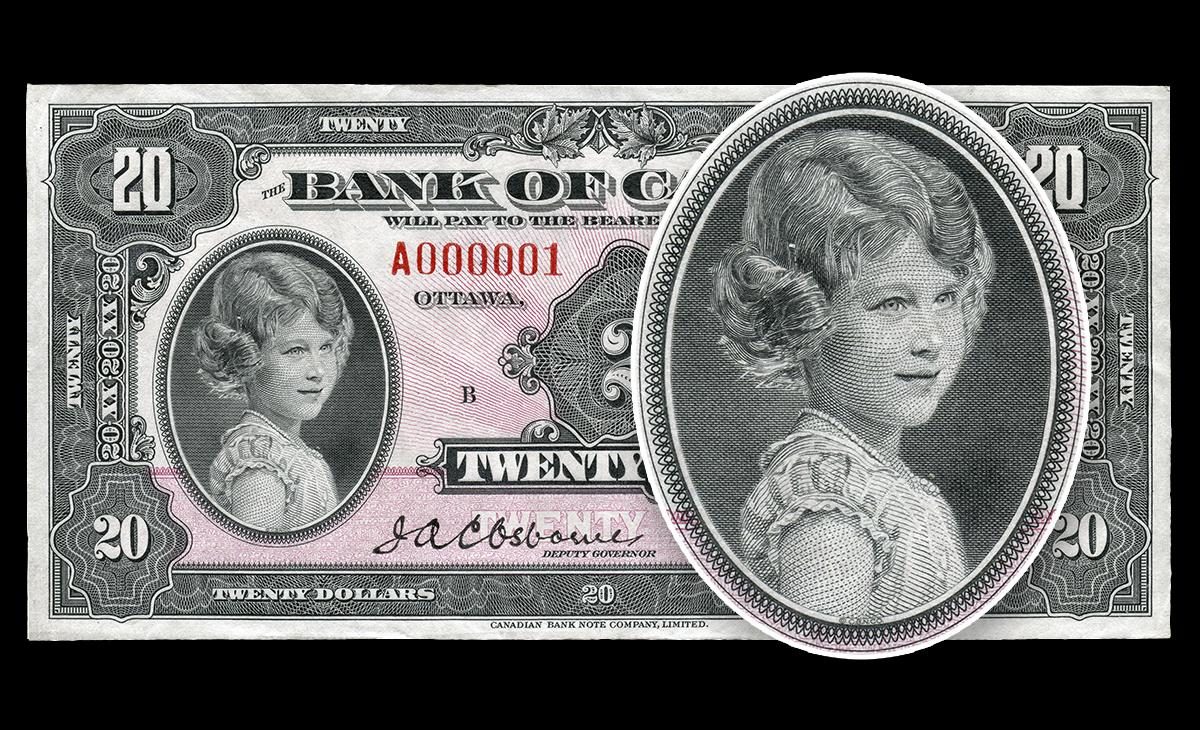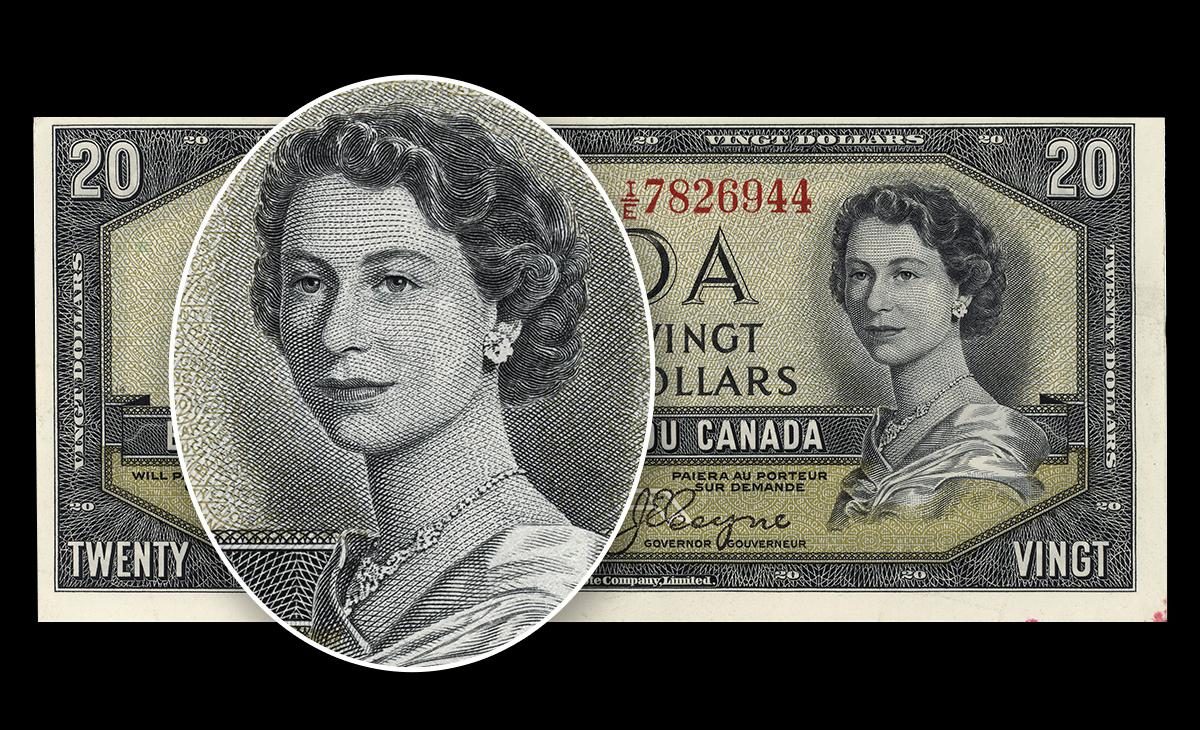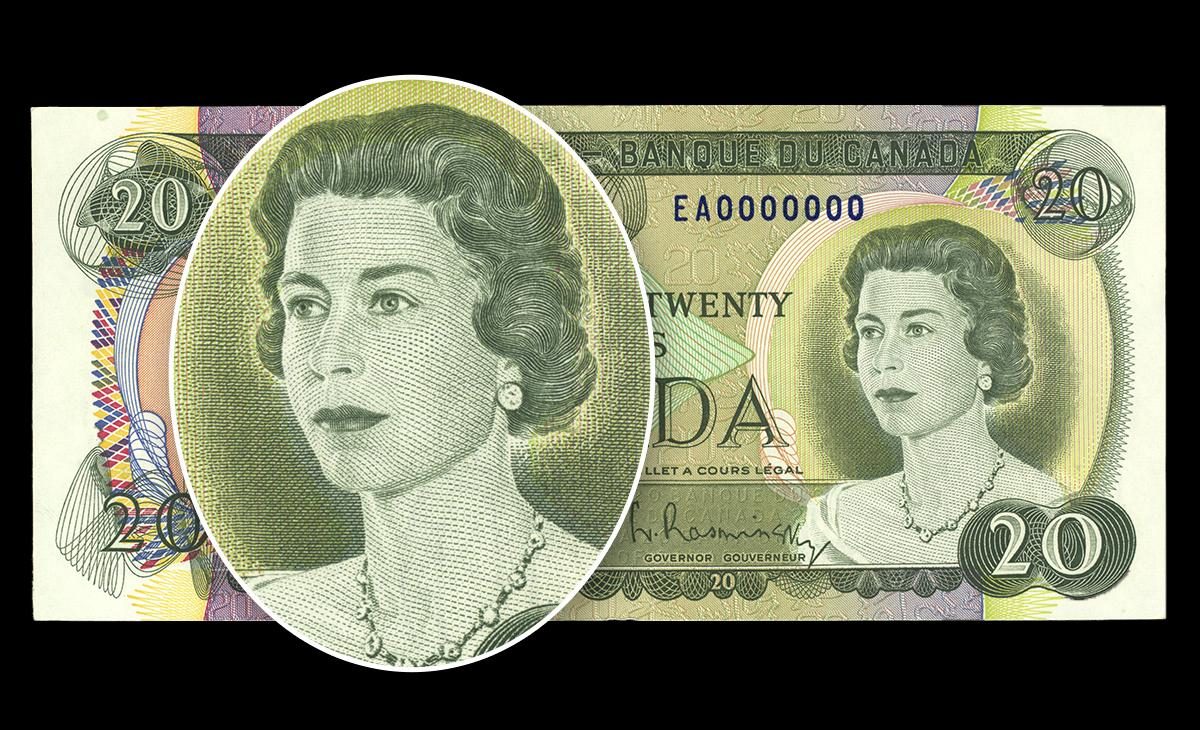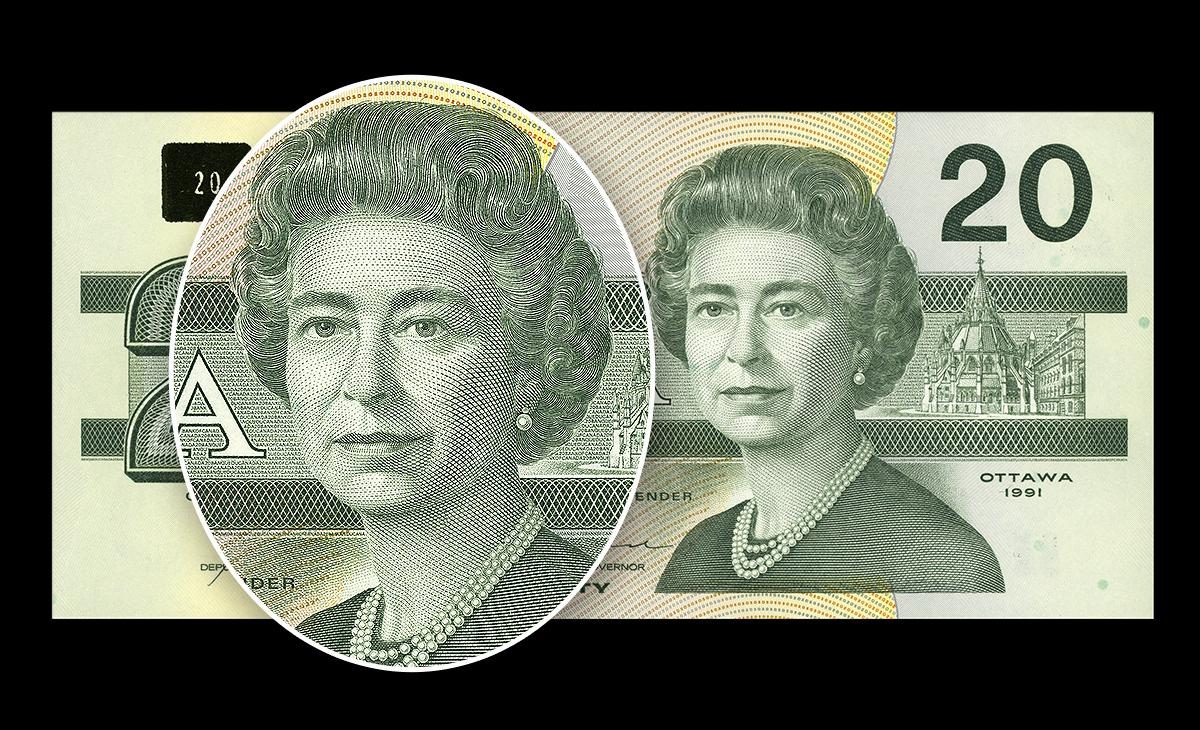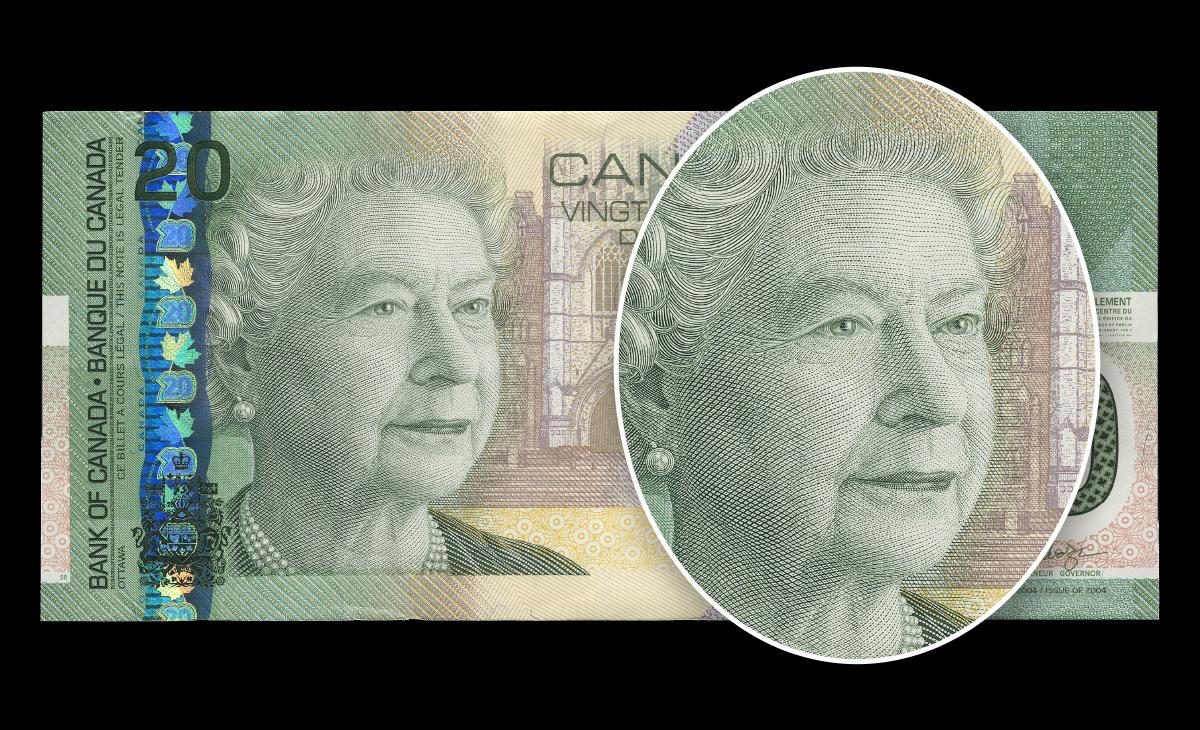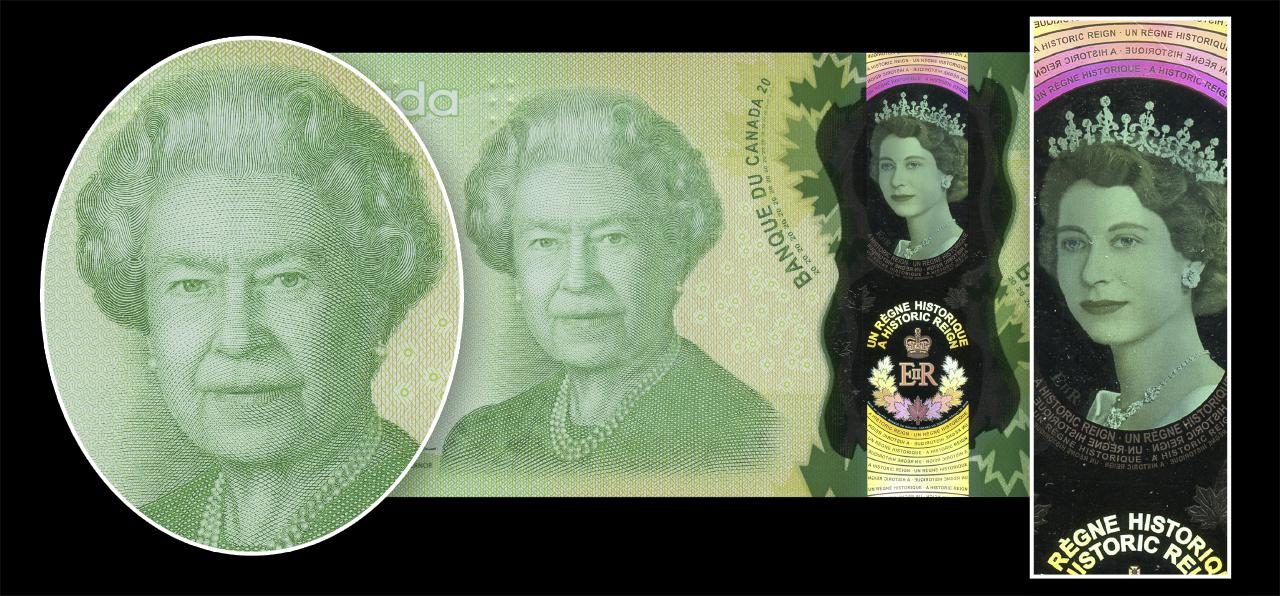The Bank of Canada's portraits of Queen Elizabeth II
Few of us have ever met her, and it’s likely none of us are even remotely related to her. Yet, all Canadians carry her picture in their wallets. She’s Queen Elizabeth II and has been our monarch for over 70 years.
A familiar face
I saw the Queen once. It was during a Royal Tour of Canada in 1978, and my parents had taken me to a street corner in anticipation of catching a glimpse of the Queen as she and Prince Philip were driven to their hotel. Ten minutes later, the royal couple swept past in the back of a sprawling white convertible. I was convinced the Queen smiled and waved at me—personally. But, upon reflection, it was likely a broader gesture toward her subjects at large—I just so happened to be in the way.
Like our experiences with any celebrity, most of us have only seen the Queen in a reproduced form: in magazines, on television and so on. But for Canadians, this celebrity is unusual for appearing most frequently on money. She has appeared on no less than 18 of our bank notes, and we’ve watched her grow up and gracefully age on this unusual medium. Canadian bank notes are unique in having featured both the child princess and the 90-year-old monarch—plus four other Queen Elizabeths in between.
The Bank of Canada’s first series
Canada is unusual among Commonwealth nations in featuring the child Princess Elizabeth on a bank note. She was eight when photographed, and in retrospect, it looks as though someone at the Bank of Canada had a crystal ball. Nobody could have known that she would become first in line to the throne a year later. In 1935, she was just one among a half-dozen of King George V’s family members to appear on the Bank’s first series of notes.
This portrait of the young Elizabeth has sometimes been called the “Shirley Temple” owing to the similarity of her curly hair to that of the famous child film star. The engraving is by Edwin Gunn of the American Bank Note Company. The original photograph was taken by Marcus Adams, London’s leading children’s photographer of the day. Adams would also photograph the young Prince Charles and Princess Anne.
The Canadian Landscape series
This is the first official portrait of the reigning Queen Elizabeth to appear on a Canadian bank note. But it was taken a year before her father, George VI, passed on. So, it’s actually a portrait of the 25-year-old Princess Elizabeth. Commissioned for a stamp, the original portrait was by Canada’s own Yousuf Karsh. In 1952, when the same photograph was chosen for our bank notes, the Bank ordered a retouch artist to remove the small tiara Elizabeth wore in the photo.
Engraved by George Gundersen, the first version of this portrait became the famous “Devil’s Head” portrait, in which some folks claimed to see a devil’s face in the hair above the Queen’s ear. After much Parliamentary ballyhoo and letters from outraged monarchists, the portrait was quietly altered by engraver Yves Baril. After the changes, nobody saw any fanciful faces in the monarch’s immaculate curls. The Queen appeared on every denomination of this series—the last time this would happen.
The Scenes of Canada series
As in 1954, the Queen was intended to appear on all denominations of this series. However, in 1968, the then-Minister of Finance decided it would be appropriate to feature some of Canada’s former prime ministers as well. In the end, the Queen appeared on the $1, $2 and $20 notes only.
The original photograph was taken in 1963 by Anthony Buckley, a photographer known for his portraits of stage and screen actors. Buckley was the “court photographer” of the British royal family through the 1960s to the mid-1970s. A set of nine photographs from this photographic session was sold at auction in 2020. Expected to sell for £5,000, the set actually sold for more than £6,500 (roughly Can$11,000 in 2021).
Buckley photographed the Queen both with and without her diamond tiara and like in the previous series, the Bank preferred to feature her without it. Ironically, after the image without the tiara was chosen, the dress the Queen wore in the photo wasn’t considered formal enough. The engraver, George Gundersen of the British American Bank Note Co., engraved a dress similar to the one she wore in the 1954 series portrait.
The Birds of Canada series
Dennis Constantine provided the photograph used to create the Queen’s engraving for the Birds of Canada series of notes. Shot in the early 1980s, the portrait was engraved by Henry S. Doubtfire of the British security printing firm De La Rue. As it had for the previous series, De La Rue provided the overall design direction for these notes.
The string of pearls the Queen wore in this portrait also appeared in the following series of bank notes, as well as the current polymer notes. She has had those pearls since she was a child, given to her by her grandfather, King George V.
The Canadian Journey series
This series was the first to be conceived and designed on a computer. However, the Queen’s portrait was created by hand in the centuries-old tradition of steel engraving. The art director of the series, the Canadian Bank Note Company’s Jorge Peral, engraved this portrait from a photograph commissioned by the Bank. The photographer, Charles Green had been photographing the royal family since the 1990s.
In 2005, this series’ $20 note became the International Bank Note Society’s first “Bank Note of the Year.” It was most especially praised for the portrait: “probably the finest portrait of the mature monarch to appear on any bank note.” The Queen herself was said to have been pleased with it.
The Frontiers series
Jorge Peral was, again, the designer and art director for this series. Computer design and computer engraving dominated development of this series, but the image of the Queen was once more engraved traditionally by Peral himself based on a photograph by Ian Jones. Jones is both a royal photographer and an award-winning photojournalist.
This was Canada’s first note series to be printed on a polymer plastic base—which provided an interesting opportunity. In September 2015, Queen Elizabeth II surpassed her great-great-grandmother Victoria as the longest-reigning British sovereign in Canada’s history. The Bank of Canada issued a subtle commemorative note for this occasion, placing a colourized version of the Canadian Landscape series’ portrait in the clear polymer window of the note. Unlike the bank note engraving, the holographic image retained the tiara Princess Elizabeth wore during her photographic sitting with Karsh.
The Museum Blog
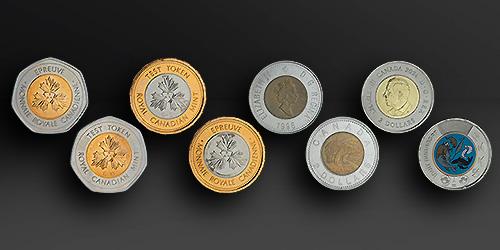
New acquisitions—2025 edition
From rare toonies to Métis scrip art, the Bank of Canada Museum’s 2025 acquisitions show how money and the economy shape Canadian lives.
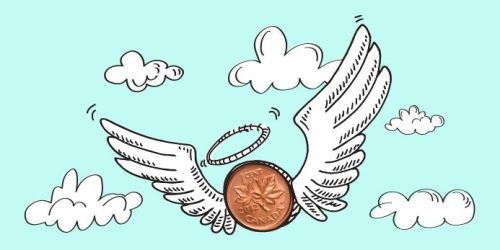
Whatever happened to the penny? A history of our one-cent coin.
The idea of the penny as the basic denomination of an entire currency system has been with Canadians for as long as there has been a Canada. But the one-cent piece itself has been gone since 2012.

Good as gold? A simple explanation of the gold standard
In an ideal gold standard monetary system, every piece of paper currency represents an amount of gold held by an authority. But in practice, the gold standard system’s rules were extremely and repeatedly bent in the face of economic realities.
